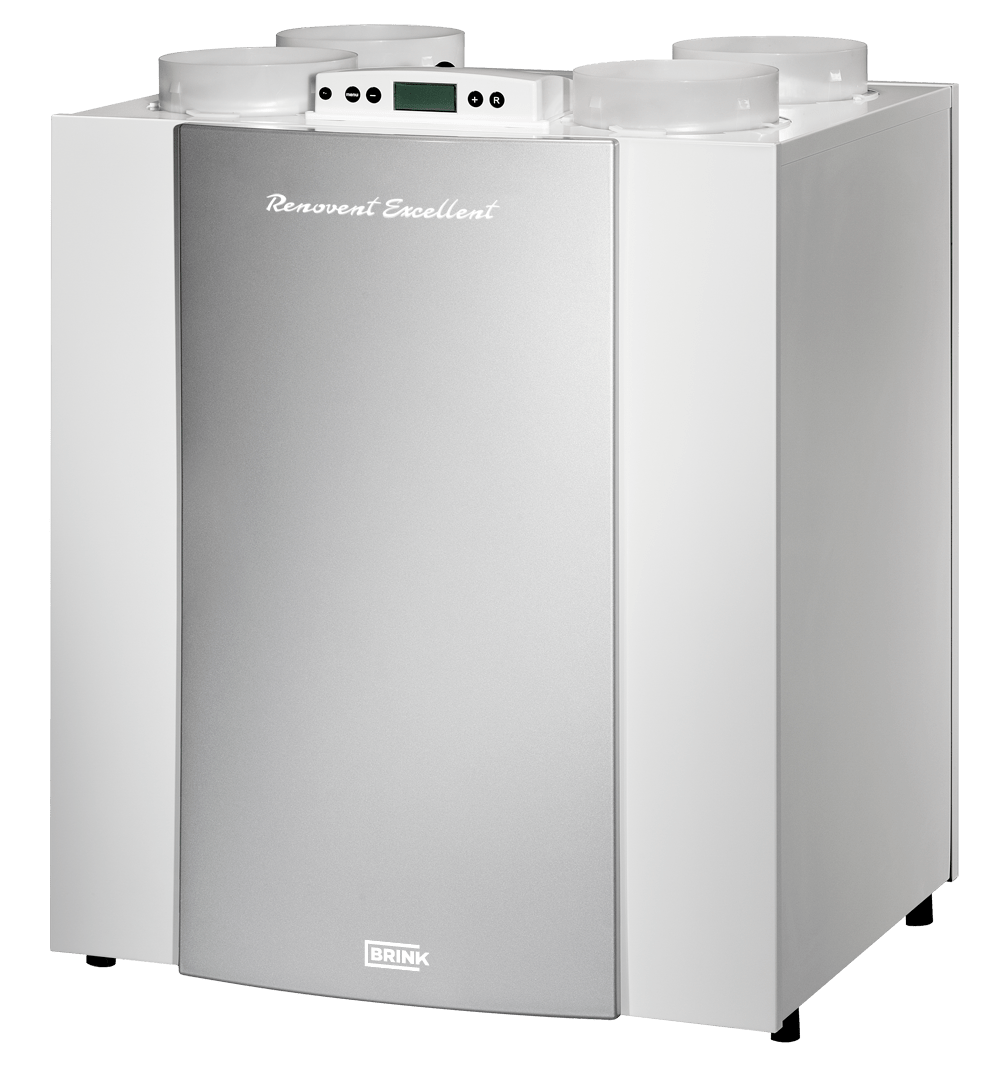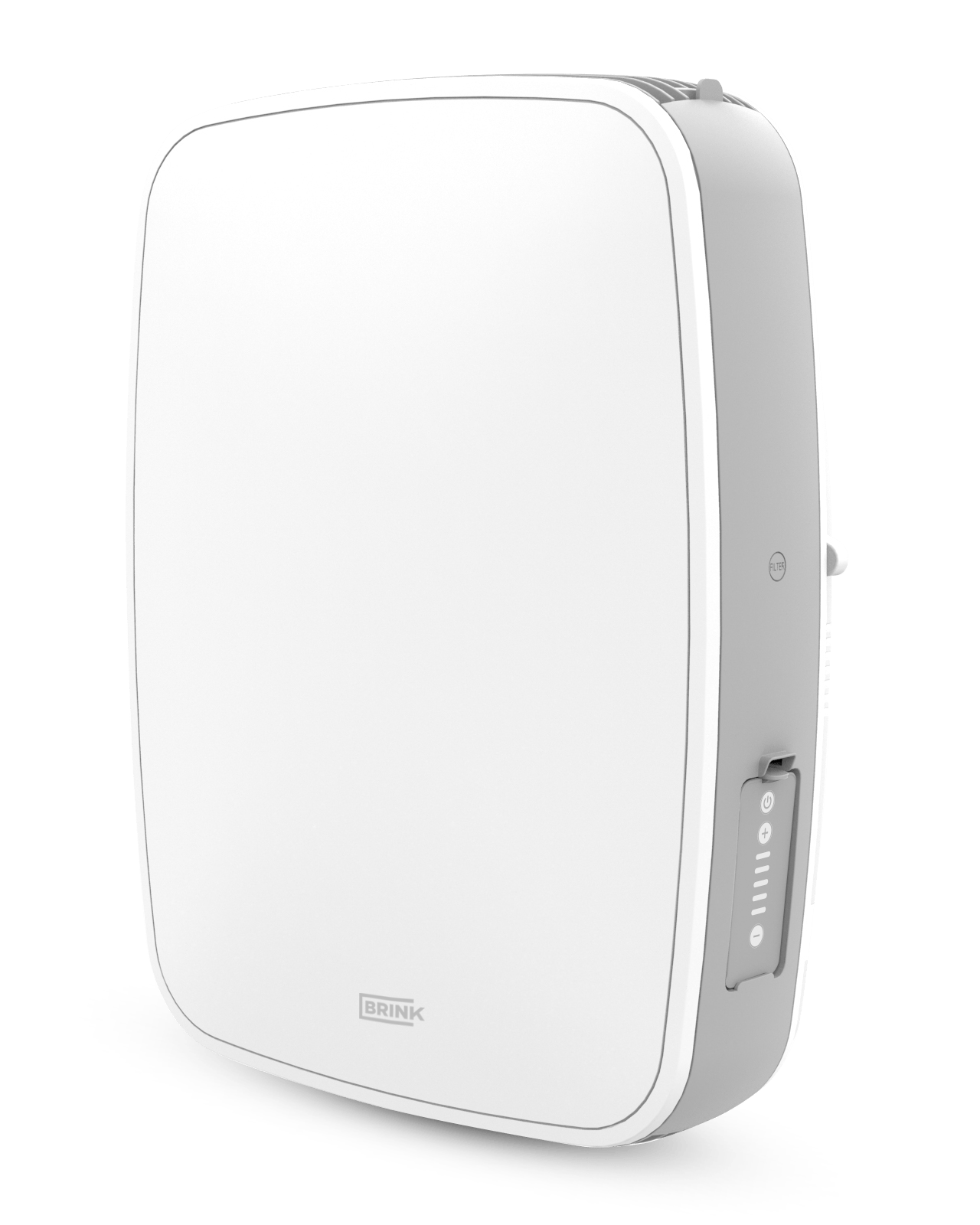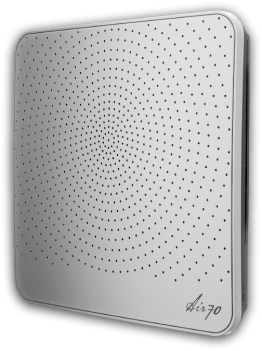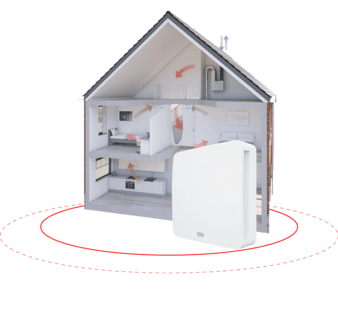Ventilation
Home: the best place to catch your breath
breathe in excellent air day in, day out
Healthy air boosts quality of life. Breathing in clean air every day gives you more energy, improved concentration and may even prolong your life.
But healthy air in your home cannot be taken for granted. On the contrary. The air in your home is often less healthy than the air outside. A well-insulated dwelling offers many benefits, but in the event of the ventilation not being in order, ‘dirty’ air (caused by such things as washing, cooking, showering and breathing) is not refreshed, which creates an unhealthy indoor climate.
We at Brink believe that has to change. We want to make filtered air something everyone can aspire to with a wide range of innovative ventilation systems.
We want to make your home the best place to catch your breath.
refreshing the air for a healthy climate
Ventilation is all about refreshing the air in a room. Opening a window or door is enough to ensure that foul air leaves the dwelling and fresh air can enter. This way of ventilating is also called ‘natural ventilation’. However, natural ventilation is usually not enough to ensure that there is a healthy indoor climate.
Nowadays, houses are much better insulated. While this might be great news for your finances and for the climate, good insulation also creates a number of problems.

an air-tight house recipe for unhealthy air
Door een woning kierdicht te maken krijgt vervuilde lucht namelijk onvoldoende kans om een woning te verlaten, met als gevolg een ongezond binnenklimaat.
Sinds de jaren ‘80 zijn veel huizen daarom voorzien van een mechanisch ventilatie systeem. Er zijn verschillende soorten mechanische ventilatiesystemen, waarvan balansventilatie met warmteterugwinning de laatste jaren aan populariteit wint.
healthy ventilation air pre-heated free of charge
Balanced ventilation with heat recovery is mechanical ventilation where the amount of supply air and exhaust air is equal or, in other words, balanced. HRV stands for heat recovery ventilation. The basis of a heat-recovery ventilation system is the heat exchanger, which is built in to the unit. This heat exchanger ‘catches’ the hot air from the used exhaust air and uses it to heat the fresh supply air. In this way, the air entering the dwelling is heated free of charge, up to around 18 °C. That means a significant energy saving, which is good for both the environment and your finances (average saving between €160 and €200 per year).
In the animation, we explain how a heat-recovery ventilation system works.
central ventilation with hrv
With central ventilation, all rooms in a dwelling (kitchen, living room, study, bedrooms and bathroom(s) are ventilated from a single central point.
Central ventilation is available if your home has supply air ducts or if you are prepared to invest in them.
Our solution for this:
 |
 |
|
| Flair | Renovent Excellent | Renovent Sky |
If there are no supply air ducts available but you are interested in central ventilation, then our innovative Multi Air Supply is an option.
Go straight to: Central ventilation
decentral ventilation with or without heat recovery
With decentral ventilation, individual ventilation units are installed in each room. Decentral ventilation is particularly suited to use in compact new-build dwellings, in renovation projects and extensions.
| The NEW Sonair makes ventilation possible in areas where it is not a good idea to open windows due to excess noise. |  |
| Sonair |
| The Air 70 ensures that incoming air is heated first. In that way, no energy is lost and you can save on heating costs. |  |
| Air 70 |
Go straight to: Decentral ventilation
central ventilation with heat recovery even without supply air ducts
Thanks to the Multi Air Supply system it is now possible to use ventilation with heat recovery in any dwelling, whether new or existing. Optimum air quality is ensured by using the smart Indoor Mixfan with active CO2 control.
High energy costs?
Insulation + ventilation with HRV = lower energy costs + a healthy indoor climate.
In addition to good insulation measures, Multi Air Supply is the ideal solution to keep down energy costs in older existing dwellings, while also creating a healthy indoor climate.

Using the Flair 225 in an apartment:

ventilation system for every type of room how can we help you?
Did you know that Brink offers a suitable solution for every residential or commercial situation?
- From small rooms, such as a single room, to complete dwellings.
- From apartment blocks, school or office buildings to healthcare facilities.
- For both new-build projects and existing buildings.
Did you know that our solutions can be expanded using a range of modules?
With our Evap air humidifier, you can control the humidity of the air in your home, while the Pure Induct purifies the air by filtering even the smallest pollutant particles.
Curious about the options? Our experts are similarly curious about your wishes!
Feel free to your nearest Brink specialist for ventilation advice.
FREQUENTLY ASKED QUESTIONS ABOUT VENTILATION

Ventilation is the replacement of (polluted) indoor air with (clean) filtered outdoor air.

To keep the air quality in your home healthy, it is important to remove dirty air. Pollution of indoor air is caused by factors including:
- Cooking (harmful particulate matter)
- Air breathed out by people and animals (CO2)
- Washing or showering (damp and mould)
- Building materials and furniture (formaldehyde)

Ventilation is often thought of as opening a window. But the ventilation system is a mechanical system, which ventilates the entire house.
The options are:
- An HRV ventilation system (often called balanced ventilation or ventilation with heat recovery): a ventilation device with heat recovery (HRV) controls the exhaust of dirty air and the supply of fresh, clean air to the living room and bedrooms. Both air flows pass a heat exchanger which removes the heat from the exhaust air and transfers it to the supply air. The air is refreshed, but the heat in the air is recovered: it is retained, not lost.
- A mechanical extraction system: air from damp rooms such as the kitchen, bathroom and toilet is removed with a fan and fed outside immediately. The living room and bedrooms are ventilated with grilles above the window.

In the Netherlands, a central ventilation system unit (for the whole dwelling) is often installed in the attic. The air is drawn out of damp rooms via air ducts. In the case of an HRV system, these air ducts are also necessary to supply fresh air for the living room and bedrooms. An innovation in this field is the Multi Air Supply system, where there is no need for air supply via air ducts. A ventilation system is usually operated with a switch in the kitchen and/or bathroom. But it is also possible to control the amount of ventilation automatically by means of sensors.

HRV is a ventilation system in which the clean supply air to the dwelling and foul exhaust air from the dwelling flow through a heat exchanger. The heat exchanger extracts the heat from the exhaust air and transfers it to the supply air. This way of ventilation means that no cold from the outside air gets inside. The heat is retained, which saves a lot of energy.